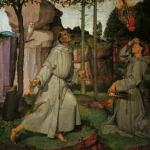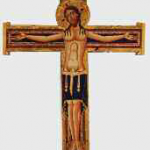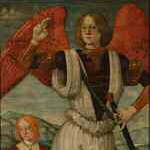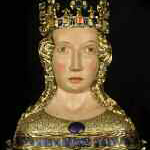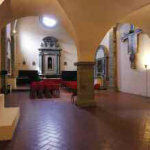Climbing from Piazza del Municipio and continuing uphill, on the left we come to the entrance of the Municipal Picture Gallery, which is also the entrance to the Church of Sant’Angelo. In fact, the Picture Gallery incorporates the Church of Sant’Angelo as well as the Choir of the Nuns of Saint Jerome.
The first mention of a picture gallery in Castiglion Fiorentino was in an 1899 catalog found in the town archives. Luca Signorelli’s fresco with the Lamentation is found on the list of the works located in the Parish Church of San Giuliano. The arrangement of the works in the parish church remained unchanged until 1919 when Alessandro Del Vita, an inspector appointed by the Superintendency of Florence to draw up a catalog of cultural assets in the Castiglione area, proposed an exhibitin of the works at the Umbro-Tuscan Exhibition that was held in Castiglion Fiorentino.
After the exhibition, civil and ecclesiastical institutions agreed to exhibit the works in a more suitable place that could become home to a town museum. It was decided that the new venue would be the Council Chamber, in the town hall. Once the site was chosen, a cataloging and restoration campaign was undertaken.
Some of the works were returned to the parish church, while most remained to become part of the new municipal museum, where the works remained until the present picture gallery was opened in 1990.


